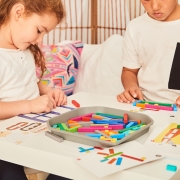Why is Construction Play Important for Children’s Development
Construction play is so much more than simply “playing with blocks.” For young children, it’s an essential form of exploration, expression, and experimentation, creating a world where imagination and problem-solving are limitless. At Edx Education, we champion play-based learning through our educational toys, resources, and the Play, Learn & Create podcast, helping caregivers to enrich their children’s learning journey at home.
Using construction toys, like Edx Education’s Linking Cubes, MyGears®, Rainbow Pebbles, Busy Play Skeletal Resources, and Marble Run, children develop an impressive range of skills. Here’s a closer look at how construction play fosters growth in areas such as communication, cognitive development, fine and gross motor skills, resilience, and persistence, equipping children with tools for lifelong learning.
1. Communication and Collaboration Skills
Construction play is often collaborative, especially when children play alongside siblings or friends. Working together on a project—whether it’s building a towering marble run or designing intricate structures with Linking Cubes—encourages children to share ideas, listen actively, and articulate their thoughts. They discuss their plans, negotiate roles, and offer suggestions to one another. This back-and-forth helps develop essential communication skills, teaching children the value of teamwork and collaboration. For caregivers, these play sessions offer ideal opportunities to join in and reinforce positive language and sharing.
2. Cognitive Development and Problem-Solving
Construction toys naturally stimulate cognitive skills like critical thinking, planning, and problem-solving. When children play with our Marble Run, for example, they’ll likely face challenges in designing tracks that ensure the marble flows smoothly. Solving these problems requires them to experiment, make predictions, and learn from outcomes, boosting logical thinking and the ability to approach tasks methodically.
With MyGears®, children can explore engineering concepts like motion, rotation, and cause-and-effect relationships. Adjusting gears to see how changes affect movement introduces them to trial and error, fostering an analytical mindset that’s beneficial for later academic learning.
3. Fine Motor Skills and Hand-Eye Coordination
Fine motor development is crucial during early childhood, impacting everything from handwriting to self-care skills. Construction play with toys like Linking Cubes and Rainbow Pebbles strengthens the small muscles in children’s hands and fingers. Building with Linking Cubes requires children to press, align, and connect pieces precisely, honing hand-eye coordination. Similarly, Rainbow Pebbles offer a tactile experience that challenges children to stack, balance, and align the pebbles, requiring both control and concentration.
4. Gross Motor Skills and Spatial Awareness
Certain construction toys, such as Busy Play Skeletal Resources and Marble Run, encourage children to use their whole bodies in play. Constructing larger structures or arranging elements of a marble run promotes gross motor skills and spatial awareness as children need to stretch, bend, and move their bodies to place and adjust pieces. This kind of play supports their understanding of physical space and enhances their body coordination, preparing them for sports and other physical activities.
5. Building Resilience and Persistence
Construction play is a valuable tool for nurturing resilience and persistence. Not every project will go as planned, and some structures may collapse or fail. While initially frustrating, these challenges teach children to cope with setbacks and persevere toward their goals. Whether it’s a collapsed tower or a gear mechanism that doesn’t quite work, construction play encourages children to try again, reinforcing the importance of resilience. Caregivers can help by offering words of encouragement, emphasizing that mistakes are just part of learning.
6. Stimulating Creativity and Imagination
Construction play unlocks children’s creativity, allowing them to build anything they can imagine. Using open-ended toys like Rainbow Pebbles or Busy Play Skeletal Resources, children are free to create patterns, shapes, and structures based on their ideas. This freedom allows for self-expression and gives children a sense of ownership over their creations. They learn that they can bring their ideas to life, which builds confidence and encourages a positive attitude toward learning.
How Edx Education Supports Construction Play at Home
At Edx Education, we provide more than just toys; we offer a complete play-based learning experience. Our products, from Linking Cubes to Marble Run, are carefully designed to engage young minds and support development in a fun, approachable way. We also offer a range of downloadable resources and activity guides to help caregivers introduce meaningful play at home. For those who want to learn more about the benefits of play, our podcast, Play, Learn & Create with Edx Education, offers expert insights and practical tips on fostering early childhood development.
Making Play a Priority
Play-based learning, especially through construction play, is one of the best gifts you can give your child. It’s a way for children to explore the world around them, build new skills, and find joy in the process. With Edx Education’s toys, products, and resources, parents and caregivers have all they need to make learning through play a reality.
By making construction play a regular part of your child’s routine, you’re not only setting the stage for cognitive and physical development but also instilling values like creativity, resilience, and persistence. So, bring out the blocks, gears, and pebbles, and let your child’s learning journey begin—one playful construction at a time.

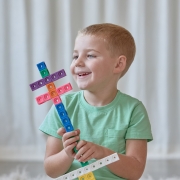
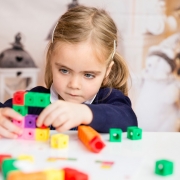
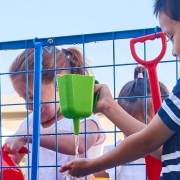
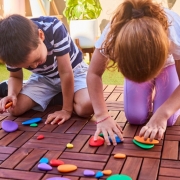
 Edx Education
Edx Education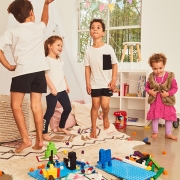 edx education
edx education